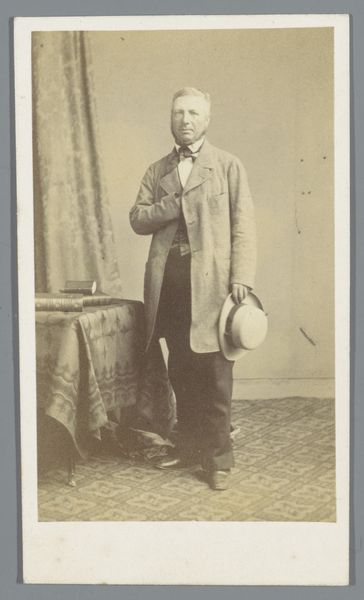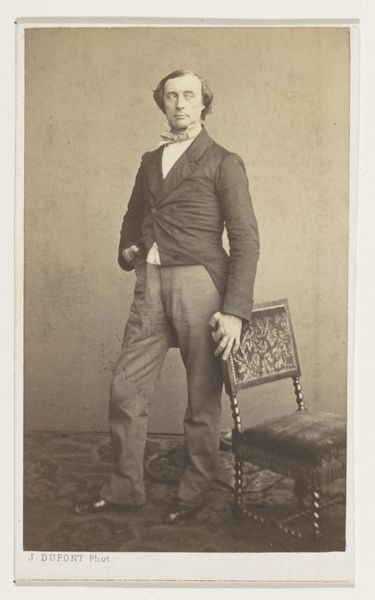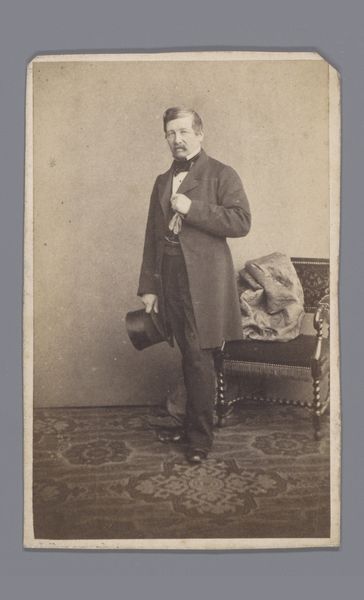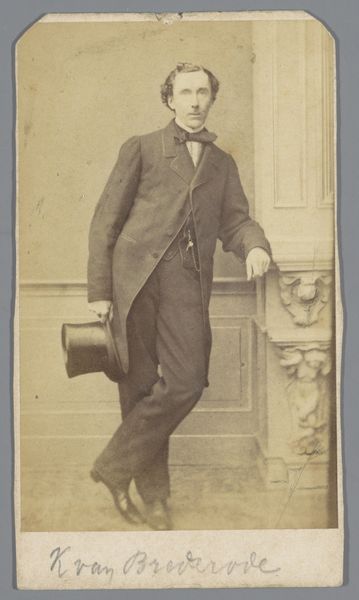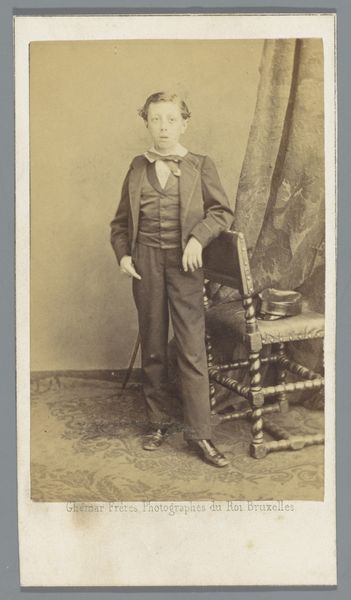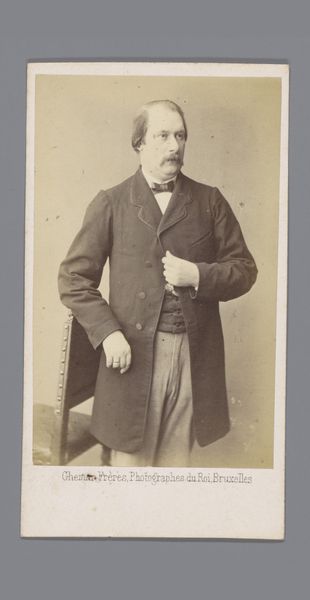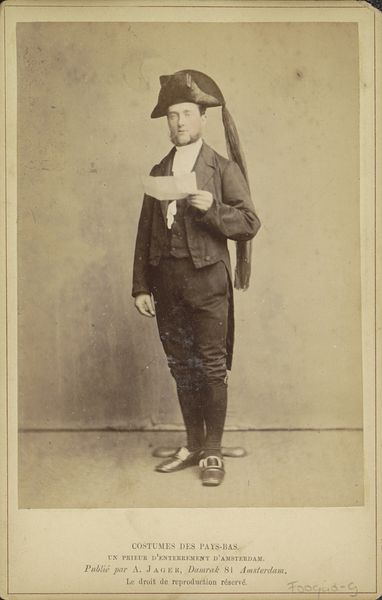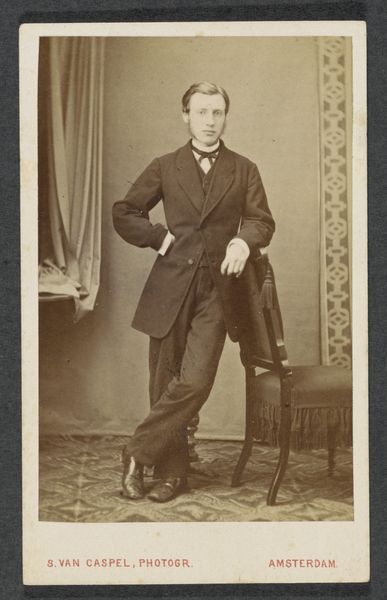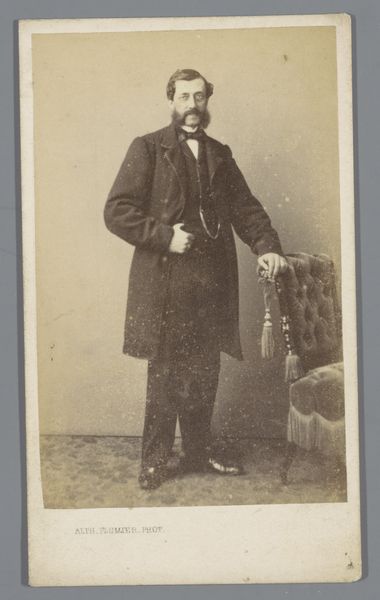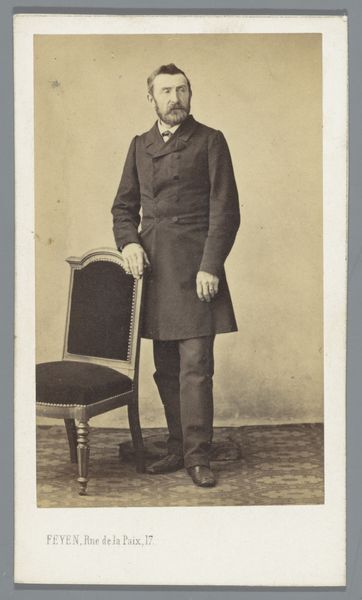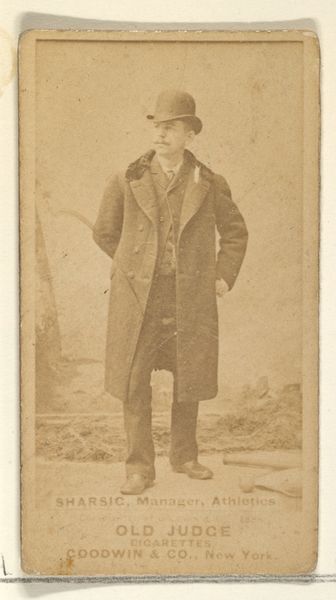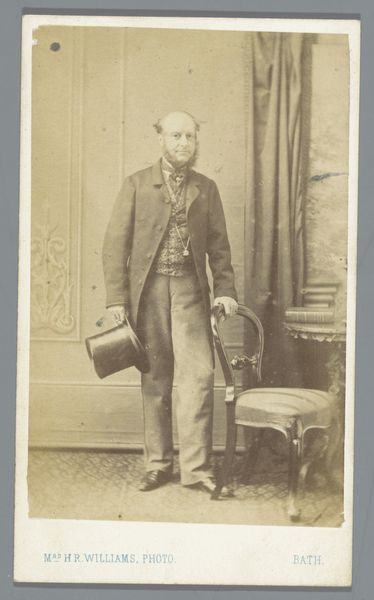
photography, gelatin-silver-print
#
portrait
#
print photography
#
16_19th-century
#
photography
#
gelatin-silver-print
#
realism
Dimensions: height 100 mm, width 60 mm
Copyright: Rijks Museum: Open Domain
Editor: Here we have Joseph Dupont's "Portret van de schilder Ferdinand de Braekeleer, ten voeten uit", a gelatin silver print from 1861. It's a full-length portrait, quite stately. There's a formal mood but the tonality also seems a little drab. What compositional elements strike you? Curator: Indeed, the composition presents a study in contrasts. The subdued palette restricts the eye from wandering excessively, thus emphasizing form and texture. Consider how the subject's dark coat sharply opposes the lighter background, defining his silhouette and imbuing the figure with presence. Editor: The texture of the carpet too adds depth, but I wonder about his pose—slightly awkward, wouldn't you say? Curator: Observe the asymmetry inherent in his stance and hand placement. It creates a dynamism counteracting the static nature inherent to posed portraiture. Note also how the fall of light, particularly upon the subject’s face, accentuates areas, introducing gradients that lend a certain lifelikeness. Editor: Are you saying it draws our eyes to what the photographer intended? Curator: Precisely. Dupont strategically used lighting to create a visual hierarchy, thus manipulating our focus. One could interpret the composition as an assertion of Realism: the formal nature of the photo captures the everyday but with artistic intention. Is that your interpretation as well? Editor: Yes! It makes you think of the formal qualities alongside an expression of daily life. I hadn’t noticed all the carefully staged aspects. Curator: Examining Dupont’s photographic technique unveils subtle aesthetic strategies in early portraiture, demonstrating that “capturing reality” involves deliberate visual constructions and interpretations.
Comments
No comments
Be the first to comment and join the conversation on the ultimate creative platform.

